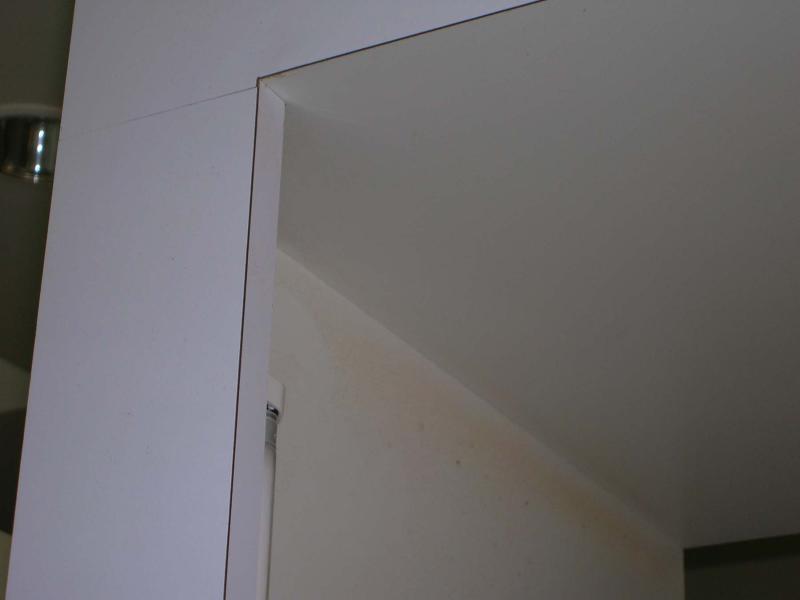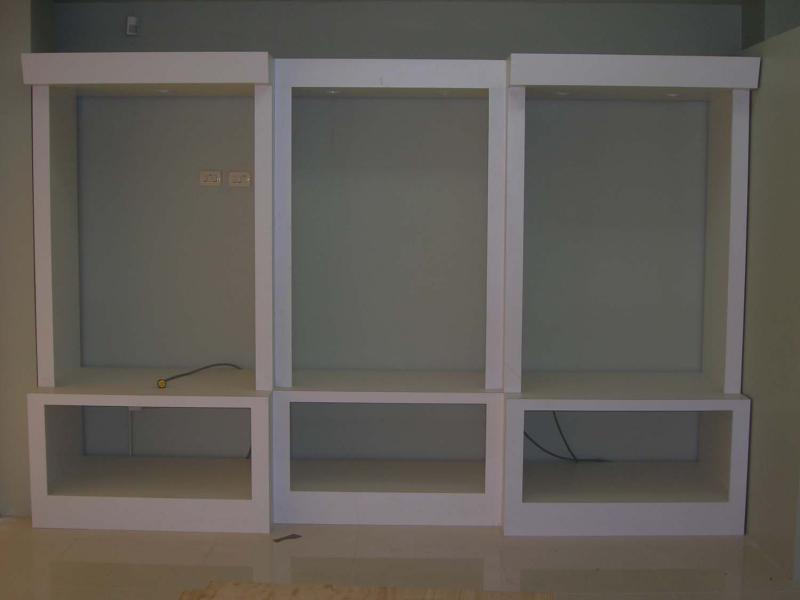Hiding Laminate Seams in Cabinetry
Other Versions
Spanish
French
There's no easy way to disguise the dark corner edges of white laminated cabinet faces. April 17, 2009
Question
I have a slight problem with a project I'm doing and was wondering if anyone can help. I have a client who wanted white laminate (and dark brown) cabinetry for their retail store. The cabinets look great, but the client is a bit unhappy with the seams of the laminate at the corners in the white units. Being white, the seams are darker because of the backing of the laminate, naturally. Are there any solutions on how to make these seams look less noticeable, while maintaining a retail, clean lined feel?
Forum Responses
(Laminate and Solid Surfacing Forum)
From contributor R:
I'm assuming you're talking about outside corners - miterfolding can produce an outside corner in laminate with little or no black line. If you can post a picture of what you are doing, myself or someone else could tell you if this would work for you.
From the original questioner:
Hereís a picture of the edge of one of the cabinets at an inside angle. As you can see, the cabinets are all constructed, the solution (if any) would have to be applied over this laminate, or to the face of the cabinetry. Contributor R - I'm assuming the miterfolding would have had to be done during the construction of the units?

Click here for higher quality, full size image
From contributor L:
This is the cluster of cabinets, as would be arranged in the store. All of the units follow this pattern, but vary in width and depth. As you can see, very simple and clean lined.

Click here for higher quality, full size image
From contributor R:
These units could be folded but it would be complex. If you have a good CNC and a good engineer it can be done. The exposed edges on the openings would have to be turned in. I can't think of anything to fix the existing ones that wouldn't look jury rigged or cost more than making new ones.
From contributor S:
Once they are made there is not really anything you can do to hide the edges. Even if you did manage to bevel the edges of your laminate to start with, it leaves a very fragile corner. Any contact with the edge will chip because you don't have much left behind the colored surface. I suggest you tell the customer to go look at millwork in other locations. They will find more of the same. Laminate is a good commercial product, but it has its limitations.
From contributor K:
You could scuff the edges and apply PVC to the edges and backfile. The seam would be on the face but PVC is colored to the core so it would not stand out as bad. That won't help the seam at the top but you wonít see that anyway.
From contributor M:
How many cabinets are you talking? If it is just a few, peel off the front and use color core laminate. You will still see a slight line but not near as bad. I don't see any easy solution.
From the original questioner:
Itís about 20 plus cupboards! Would it really be worth it to put that much manpower into removing the existing laminates and re-laminating with color core laminate? I hate to say this but I'm beginning to think this is a lost cause. Maybe I should show the client other retail outlets to help him understand?
From contributor W:
What about taking the lemon and making lemonade. What about making some kind of small T-molding or adding a contrast flat strip and inserting in the seams. A contrast color or white; make it look like it was intend to be as a decoration. Fairly ease to route even now (use a vacuum pump straight edge to guide the router and cut a small route for the t-molding). I have often had to add molding to hide mistakes or flaws on furniture.
From contributor J:
The easiest and least expensive fix would be to peel the laminate off the inside edges, file the lip smooth and use white PVC edgebanding on all the inside edges. You may have a slight variation in color but there won't be any black lines.
From contributor C:
That is some thicker than normal laminate. Different brands have different thickness and Wilsonart is about the thinnest I know of. Actually your customer is exercising his rights as he paid for the job, but is being way to critical as edges on lam are going to be seen. Once the product is displayed in the case it will look better.

